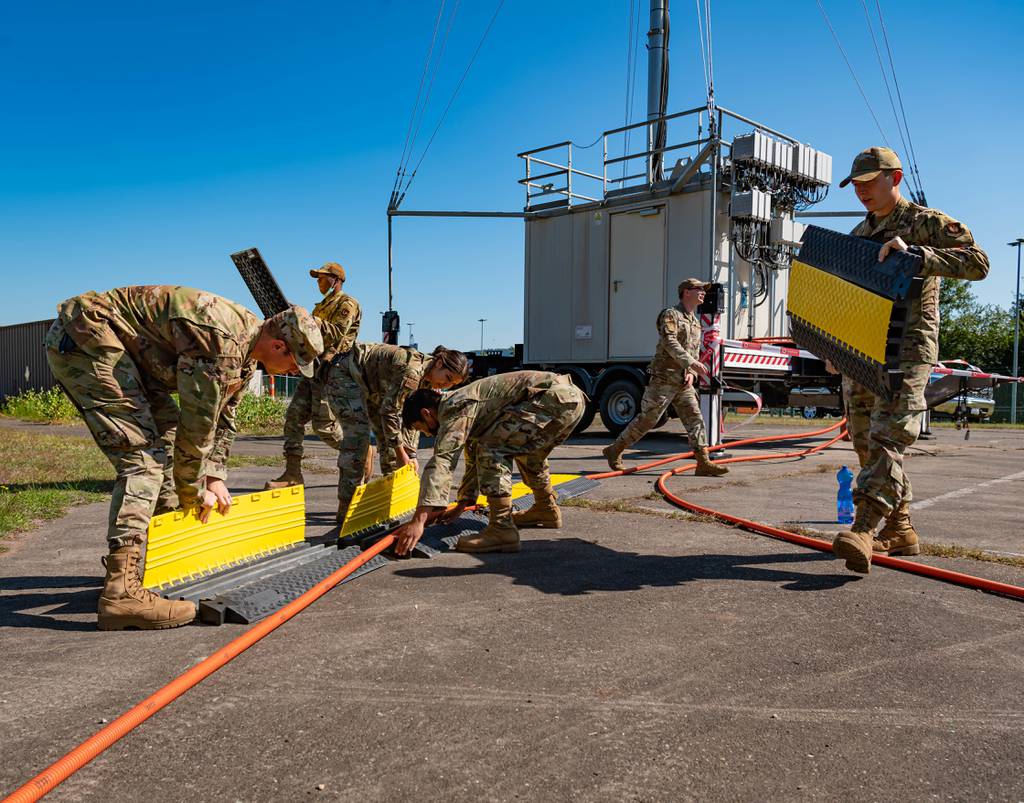The U.S. Senate recently unveiled a defense authorization bill that includes $1 billion in science and technology funding for innovative technologies, including 5G communications. But making this investment worthwhile will require much more than just taking commercial off-the-shelf technology and matching it up with mission objectives.
That’s because 5G is a different beast than many other technologies the military has leveraged from the private sector. Right now, there is no “goldilocks” 5G technology that will perfectly match mission objectives. Plus, there are software and even cultural factors to consider if the DoD is to leverage 5G for its stated intent as “a foundational enabler for all U.S. defense modernization programs.”
Here are four strategies the DoD must consider adopting today if it wishes to unleash the full potential of 5G on the battlefield.
Create a plan to overcome cultural hesitations or misunderstandings
There may be significant adoption challenges for 5G technologies, both at the individual and organizational levels.
For instance, 5G will make extended reality (XR) viable in the field, but it will require soldiers to wear or carry cumbersome equipment. That could spur some backlash — after all, not many soldiers will likely want to wear a bulky augmented reality headset for eight to ten hours per day or during tactical operations. Equipment will need to get smaller and reduced to the optimal size, weight and power (SWAP). Soldiers will also need to train to understand that the benefits of using the equipment will ultimately overshadow the drawbacks, regardless of SWAP.
There will also be organizational cultural hurdles to overcome, particularly among IT teams that are used to doing things “a certain way” because they’ve proven reliable in the past. But 5G is rewriting those rules since it is combining the IT, applications and communication/network capabilities. This requires new skills, responsibilities and perspectives. The DoD must begin laying the groundwork today, start thinking of ways to train these individuals on the technology and work with them to ensure they are comfortable with the impending changes.
Develop software to support 5G applications
Connected devices are just one part of a 5G network; software is equally important. Therefore, the DoD must develop a software ecosystem to support its 5G implementation.
Consider something as basic as remote maintenance of a sensor. Troops will need to access manuals, schematics and general information about the equipment. Ideally, they will be able to update and fix the equipment remotely if something breaks down. 5G will enable soldiers in the field to have access to remote experts and detailed engineering and maintenance information. However, new software is needed to access existing data and make it consumable in this new environment.
The software must be device agnostic and easily integrated with the many different device form factors the military will undoubtedly be using. It also needs to be ready to run whenever and wherever the need arises.
In short, 5G hardware and software cannot be mutually exclusive. The DoD needs to consider both as it maps out its 5G plans.
Take a holistic approach to 5G security
Security will be a top priority for any DoD communications initiative. Yet while the DoD’s Tranche II request for prototype proposals includes stipulations for 5G security, it still feels very network focused.
While strong network security is important, the network is only part of what the DoD should monitor. The highly distributed and expansive nature of 5G demands the DoD take a more holistic approach to security and monitor all edge devices and data sources.
Questions like “How will we secure our drones?” or “How will we protect a remote device?” have more to do with protecting the devices themselves and their data — especially as more data is collected and processed at the point of origin. Thus, 5G security requires a very granular approach that is different from simply monitoring the network — yet another way 5G will upend traditional thinking.
Remain flexible and adaptable
The DoD is already working with the private sector to address many of these challenges. Many private/public sectors working groups dedicated to change management, software development, and security are in place. Even though the private sector is not always in step with the DoD’s current mission needs, the two must continue working together and support these working groups. This support will allow them to become more closely aligned and provide cross-functional teams with guidance.
From this guidance, the DoD will undoubtedly learn that flexibility and adaptability are vitally important in the face of a technological sea change like 5G. The DoD understands the technology has enormous potential and sees its possibilities, but it will take some adjustments for the agency to leverage the true power of 5G communications.
Leland Brown, is the technical director of advanced wireless technology for military-aerospace and government at Intel Federal LLC, and Anna Scott is the senior solution architect at Intel Public Sector.








